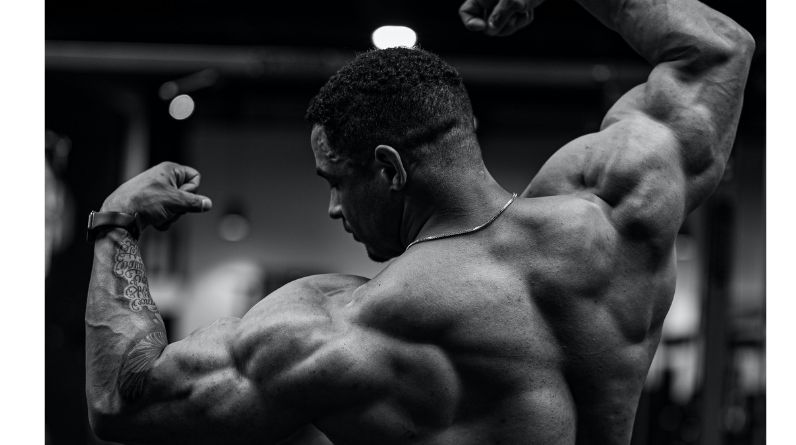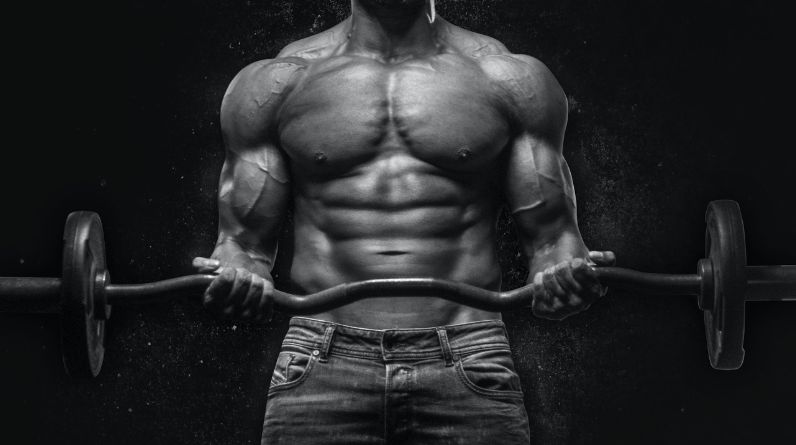
CHOOSING THE RIGHT APPROACH BETWEEN THE TWO
Introduction
When it comes to sculpting the perfect beach body or chasing after those elusive gains, one question that often leaves fitness enthusiasts scratching their heads is, “Should I embrace the wisdom of the bro split, or should I dive headfirst into the all-encompassing arms of full-body training?” This is a question that has been discussed in sacred gym hallways across the globe, most likely with carpets stained with protein shake residue. Let’s settle this beef once and for all in a style as lively as the squat rack grunts.
The Battle Begins – What Are They?
Split Training: Imagine your week divided like slices of a delicious protein cake. Each day, you savor a different slice, dedicating it solely to a specific muscle group. Chest on Monday, biceps on Tuesday, and so on. This is split training. You become a surgeon, carefully dissecting your week into muscle-building sections.
Full-Body Training: In contrast, full-body training is like ordering a tasting menu at a fancy restaurant. You engage multiple muscle groups in a single workout. Rather than separating muscle groups, you work them all, training the body as one functional unit.
The Bro Split – Celebrating Isolation
Pros: The bro split, where each muscle group gets its day in the sun (or under the fluorescent gym lights). Here’s why some fitness aficionados swear by it:
Isolation: Bro splits allow you to laser-focus on a single muscle group each day. That means you can hit those triceps or calves with a barrage of exercises, giving them all the attention they crave.
Intensity: With an entire day dedicated to one muscle group, you can go all-out on those pecs or quads without worrying about exhausting yourself for the next exercise.
Bodybuilder’s Dream: This method has been the darling of bodybuilders for ages, helping them sculpt their bodies into works of art.
Cons: But before you start mentally planning your next chest day, let’s look at the not-so-glorious side of the bro split.
Time-Consuming: Splitting your workouts means you might spend hours in the gym each week, which can be a deal-breaker for those with busy schedules.
Lack of Frequency: While you’re overloading your chest with bench presses on Monday, your legs are patiently waiting their turn on Friday. This infrequent training might not be optimal for muscle growth.
Plateau Potential: Doing the same exercises for the same muscle groups every week can lead to plateaus. Your muscles eventually adapt to the routine, and gains slow down.
Full-Body Bliss – Mastering Efficiency
Pros: Now, let’s explore the world of full-body training, where efficiency is the name of the game.
Time-Saver: Full-body workouts require fewer days at the gym. You can hit all the major muscle groups in a single session, freeing up your calendar for other life adventures.
Frequency: Muscles love consistency. With full-body workouts, you train them more frequently. This may more successfully promote the growth of muscle.
Caloric Burn: Because you’re engaging multiple muscle groups, full-body workouts can burn more calories in a single session, which might be great for those aiming to shed some extra pounds.
Functional Strength: Full-body workouts often mimic real-life movements, making you more capable in daily activities.
Cons: But, as with any relationship, there are a few downsides.
Intensity: Training your whole body in a single session can be exhausting. You might not have the same energy levels for every muscle group.
Longer Workouts: Full-body workouts can be time-consuming. If you’re in a rush, these sessions might not fit into your schedule.
Recovery: Hitting the same muscles every session can be tough on recovery, potentially leading to overtraining if you’re not careful.
The Decision Dilemma – How to Choose?
Alright, you’ve heard the pros and cons of both approaches, but how do you make this tough decision? Here are some pointers to consider:
Goals: What are you trying to achieve? If you’re a bodybuilder looking for hypertrophy, the bro split might be your best buddy. But if you’re after overall fitness and strength, full-body training might be your soulmate.
Time: How much time can you commit to the gym? If you’re on a tight schedule, full-body workouts could be your savior.
Experience: Your fitness level plays a role too. Beginners might benefit from full-body workouts to build a solid foundation, while advanced lifters might embrace the bro split to target specific muscle groups.
Preference: Lastly, what do you enjoy the most? The best workout routine is the one you’ll stick with, so choose the approach that makes you excited to hit the gym.
Conclusion
In the eternal battle of split training vs. full-body training, there’s no one-size-fits-all answer. Your choice should align with your goals, lifestyle, and preferences. Both methods can help you achieve your fitness aspirations. So, whether you’re proudly sporting your “Leg Day Everyday” shirt or keeping it simple with full-body workouts, remember that consistency and dedication are the real keys to unlocking your fitness potential.
Now go forth, my fellow gym warriors, and may your gains be plentiful, and your workout debates friendly.
Frequently Asked Questions
1. Can I combine both methods?
Absolutely! The beauty of the fitness world is its flexibility. Many gym enthusiasts find success in combining both split and full-body training. You can begin with full-body workouts to build a strong foundation and then introduce split training to focus on specific muscle groups or weaknesses. This approach offers variety, prevents plateaus, and caters to your evolving fitness goals.
2. How long should a workout be?
It depends on your goals and schedule. A full-body workout typically falls within the 45-60 minute range. This duration provides sufficient time to target major muscle groups and induce an effective stimulus for growth. In contrast, bro splits might extend longer, especially if you’re dedicating an entire session to a single muscle group. However, remember that the quality of your workout matters more than its duration. Ensure each minute in the gym is filled with focused, intense effort.
3. Should I work out every day?
Not necessarily. While dedication is admirable, overtraining can lead to fatigue, reduced performance, and even injury. Rest days are essential for recovery. This may more successfully promote the growth of muscle. The frequency of rest days depends on factors like your fitness level, age, and the intensity of your workouts. Most individuals benefit from 1-3 rest days per week. Listen to your body, and if you’re feeling excessively fatigued or experiencing persistent soreness, consider taking a well-deserved break.
4. Do full-body workouts burn more calories?
Yes, they tend to burn more calories. Full-body workouts are like the multitaskers of the fitness world. Since they engage multiple muscle groups simultaneously, they increase your heart rate and calorie expenditure. This elevated calorie burn can be advantageous for those looking to shed some extra pounds or maintain a lean physique.
5. Can I build muscle with full-body workouts?
Absolutely. Contrary to the myth that you need isolation exercises to build muscle, full-body workouts are highly effective at stimulating muscle growth. Compound exercises recruit multiple muscle groups, promoting overall muscle development. Your body doesn’t distinguish between full-body and split routines when it comes to muscle building, as long as you provide sufficient stimulus and nutrition.
6. Is the bro split outdated?
Not at all. The bro split, with its laser focus on specific muscle groups, is far from outdated. Many bodybuilders and seasoned lifters continue to swear by this method because it allows for concentrated muscle targeting. What’s essential is understanding your goals and preferences. If you thrive on dedicating entire sessions to sculpting specific muscles, the bro split might be your ticket to gains.
7. Which is better for fat loss?
Both approaches can aid in fat loss. When it comes to fat loss, diet plays a more substantial role than the specific training method. However, full-body workouts might have a slight edge due to their calorie-burning potential. Engaging multiple muscle groups in a single session elevates your metabolism and energy expenditure. Remember, though, that a calorie deficit, achieved primarily through diet, is the key to effective fat loss.
8. Can I do cardio with these routines?
Yes, you can incorporate cardio. Cardiovascular exercise complements both split and full-body routines. It’s a fantastic way to enhance your endurance, promote heart health, and burn extra calories. Depending on your goals, you can add cardio at the beginning or end of your workouts or on separate days. Just watch out not to go overboard because too much cardio can impede the growth and recovery of your muscles.
9. How many rest days should I take?
This varies by individual and depends on factors like training intensity and recovery capacity. However, as a general guideline, most people benefit from 1-3 rest days per week. On these days, focus on active recovery techniques like light stretching, yoga, or low-intensity activities to promote circulation and muscle repair.
10. Do I need to change my routine frequently?
Yes, regular routine changes can be beneficial. Your muscles adapt to consistent stimuli over time, leading to plateaus in progress. Changing your routine every 4-6 weeks can help prevent stagnation and keep your workouts challenging. It doesn’t mean a complete overhaul; sometimes, small adjustments like altering exercises, rep ranges, or rest intervals can suffice.






